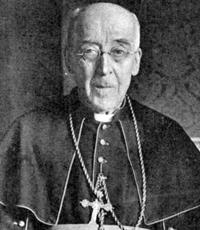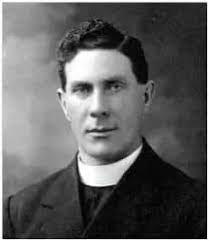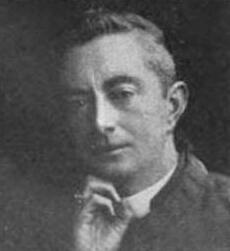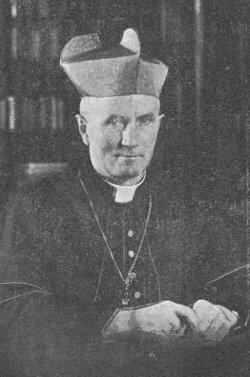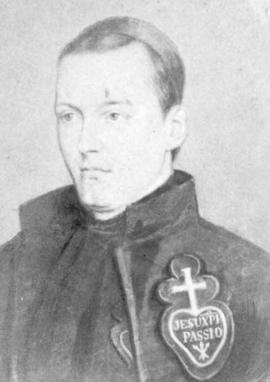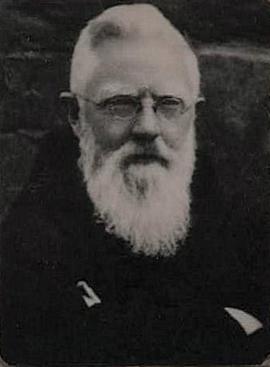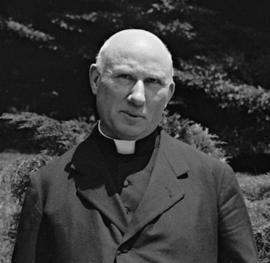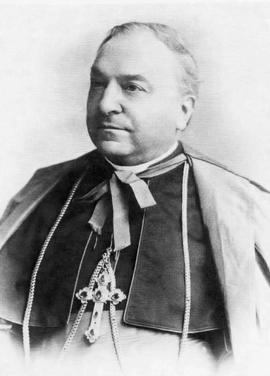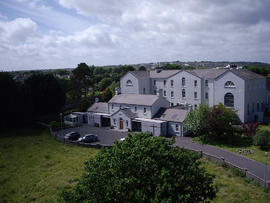Apostolic Nuncio to Ireland, 1930-1948 https://en.wikipedia.org/wiki/Paschal_Robinson
Monsignor Patrick Joseph Whitney (1894 - 1942), was an Irish priest who in 1932 founded the Saint Patrick’s Society for the Foreign Missions[1] known as the Kiltegan Fathers.
Patrick Morrisroe the son of Mary Brennan and John Morrisroe (the baker) was born in Charlestown, County Mayo 19th February 1867. His sponsors were Luke Brennan and Frances Kelly. He joined several siblings. As seemed to follow family suit, he was educated at the local N.S. Seminary, then on to Ballaghadereen and Maynooth College. Following his ordination at the Cathedral at Ballaghadereen he served in the diocese of Achonry. In 1896 Patrick returned to Maynooth to become Junior Dean in the College.
CathedralPatrick was consecrated a Bishop at the age of 44 in the Cathedral, Ballaghadereen along with his cousin Most Rev. Bishop Michael J. O'Doherty, later to become Bishop of Zamboagna, in the Philippines. Most Rev. Dr. Healy, Archbishop of Tuam was the concecrating prelate, and was assisted by Rev. Dr. Clancy, the Bishop of Elphin. The congregation which filled the Cathedral included Messrs. John Dillon M.P., J. McVeagh M.P., and John O'Dowd M.P. The sermon was preached by Rev. Dr. Beechler, Maynooth College.
A man of deep learning Patrick was an authority on theological and liturgical matters. His Lenten Pastoral of 1941, one of great controversy was censored by the government. There are two versions of the Pastoral, one before censorship and one after. In it he directs his final comments to a world in crisis. "As we pen these pages, beloved Brethren, we are face to face with a spectacle probably more appaling than any recorded in the annals of history. Long ago it was predicted that nation would rise agains nation and Kingdom against Kingdom."
At the age of 79 Patrick died at the Palace, Edmondstown House, Ballaghadereen. Priests and people from all parts of the Diocese of Achonry and from around the world attended the removal of the remains to St. Nathy's Cathedral. The Archbishop of Tuam, Most Rev. Dr. Walsh officiated at the house. The funeral procession was headed by the members of the Diocesan Chapter and a large number of surpliced clergy of the diocese who chanted the Miserere. Members of the St. Vincent de Paul and Gardai acted as pall-bearers and marshals, and gardai, under the direction of Supt. J. Lyons provided a guard of honour. Members off all the Catholic organizations marched in the procession. His crypt is located within the sanctuary.
Taken from - https://freepages.rootsweb.com/~morrisroe/genealogy/notjustacouple.html
See also https://www.catholic-hierarchy.org/bishop/bmorr.html
Born at Grange, Fedamore, Co. Limerick, he was educated at St Munchin's College, Limerick and St Patrick's College Maynooth. Ordained priest in June 1915, he returned to Maynooth to prepare for a Doctorate in Divinity. He was appointed to the staff of Maynooth, and held the post of Professor of Moral Theology before becoming Vice-President of the College in 1936. He became PP Bruff and St Munchin's before he was appointed bishop in December 1945. He was consecrated bishop of Limerick on February 24th 1946.
Bishop O'Neill prepared the ground for the development of St Munchin's College and moved the Bishop's residence to Kilmoyle. Despite being a shy person, he was the driving force behind a great deal of Diocesan work. He died suddenly in Kilmoyle on March 26th 1958 and is buried in the priests' plot in Mount St Laurence Cemetery.
https://limerickdioceseheritage.org/Diocese/FormerBishops/PatrickONeil.htm
Two page biography to be found at: Page 1 Page 2
Full biographies include:
-After Night the Dawn : the life of Paul Mary Pakenham, Passionist by Stephen M Hanford
Nicholas Phelan was born in Graiguenamanagh, a small town on the border between Counties Carlow and Kilkenny, on 16 June 1874. He joined the Capuchins at the age of sixteen, took Benedict as his religious name, and was professed in 1891. He was ordained a priest in Holy Trinity church in Cork in January 1899. Following his ordination, he was appointed Master of Novices and spent five years ministering in Cork. In 1904 he was transferred to the Capuchin Friary on Church Street in Dublin. He worked in the capital for the next forty years and was the principal organiser of the choir in St. Mary of the Angels on Church Street for most of this time. He served as Provincial Secretary from 1910 to 1913. He was appointed vicar in 1919 and was guardian (local superior) of the Capuchin community on Church Street from 1922 to 1925. He acted as spiritual director of the Sacred Heart Sodality for many years and was also director of the local Third Order of St. Francis confraternity. He was well-known as a mission and retreat giver throughout Ireland but particularly in almost all the parishes in County Dublin. At the time of his death (on 19 July 1947) he was a member of the Capuchin community in Kilkenny. He died in a nursing home at 7 Mount Street Crescent in Dublin following a long period of illness and was buried in Glasnevin cemetery in the city.
Baptismal name: Nicholas Phelan
Name in religion: Benedict
Date of birth: 16 June 1874
Place of birth: Graiguenamanagh, County Kilkenny (Diocese of Kildare of Leighlin)
Name of father: John Phelan
Name of mother: Mary Phelan
Date of reception into the Capuchin Order: 23 June 1890
Date of first profession: 15 Aug. 1891
Date of final profession: 11 Oct. 1896
Date of ordination: 8 Jan. 1899
Date of death: 19 July 1947
Place of death: Dublin
Place of burial: Glasnevin Cemetery, Dublin
Pietro Fumasoni Biondi (4 September 1872 – 12 July 1960) was an Italian Cardinal of the Roman Catholic Church who served as Prefect of the Sacred Congregation for the Propagation of the Faith in the Roman Curia from 1933 until his death, and was elevated to the cardinalate in 1933.
Fumasoni Biondi was born in Rome to the aristocratic Filippo and Gertrude (née Roselli) Fumasoni Biondi; he had a sister who entered the Missionary Sisters of the Sacred Heart of Jesus and became known as Mother Gertrude.[1] After studying at the Pontifical Roman Seminary, he was ordained to the priesthood by Cardinal Lucido Parocchi on 17 April 1897. From 1897 to 1916, he was a professor at the Pontifical Urbaniana University and then an official of the Sacred Congregation for the Propagation of the Faith.
On 14 November 1916, Biondi was appointed Apostolic Delegate to the East Indies[2] and Titular Archbishop of Dioclea. He received his episcopal consecration on the following 10 December from Cardinal Domenico Serafini, OSB, with Bishops Joseph Legrand, CSC, and Agostino Zampini, OSA, serving as co-consecrators, in the chapel of the Urbaniana University. In this post, he actively tried to improve relations between the Vatican and the Emperor of Japan.[3] Biondi was later named Apostolic Delegate to Japan on 6 December 1919, Secretary of the Congregation for the Propagation of the Faith on 14 June 1921 and Apostolic Delegate to the United States on 14 December 1922. In 1927, he declared the Vatican had no interest in the presidential campaign of Al Smith, the Catholic governor of New York.[1]
Pope Pius XI created him Cardinal-Priest of Santa Croce in Gerusalemme in the consistory of 13 March 1933, in advance for his appointment as Prefect of the Sacred Congregation for the Propagation of the Faith three days later, on 16 March. Cardinal Fumasoni Bondi served as papal legate to the National Eucharistic Congress in Teramo on 20 August 1935. He was one of the cardinal electors who participated in the 1939 papal conclave, and again in the conclave of 1958.
Biondi died in Rome, at age 87. He is buried in the Campo Verano.
Pietro Gasparri, GCTE (5 May 1852 – 18 November 1934) was a Roman Catholic cardinal, diplomat and politician in the Roman Curia and the signatory of the Lateran Pacts. He served also as Cardinal Secretary of State under Popes Benedict XV and Pope Pius XI. - Wikipedia https://en.wikipedia.org/wiki/Pietro_Gasparri
In the retreat of our Province dedicated to him, the festival of St Paul of the Cross has been, in two successive years, marked by a death of a son who had served his Congregation through many and devoted years. Last year Father Gregory of St Joseph, this year Father Pius of the Holy Ghost was called to his reward, at Mount Argus, on the Saints Festival.
Father Pius of the Holy Ghost - in the world James Devine - was at Aclare, Co. Sligo, on the festival of the Epiphany, 1838. He made his classical studies at the seminary of his native diocese, Achonry, and then went to Maynooth where, after four years study, he received Minor Orders. But it pleased Almighty God to bestow upon him the grace of a vocation to the religious life; and soon two things turned his thoughts to the Congregation of the Passion, one was a retreat given at Maynooth by Father Vincent Grotti, the founder of Mount Argus, and the other the chance perusal of the life of Father Paul Mary Packenham, its first Rector, who had died soon after the arduous labours of a mission given by us in Rathmines Parish Church. Father Pius entered the Novitiate in the autumn of 1858 and was professed on September 29th of the following year. In 1861 he was ordained priest at St Joseph's, Highgate; and immediately commenced that career of Professor of Theology which he was to pursue so successfully through many years. When, in November, 1867 all the students of the Province were gathered in Dublin, under the presidency of Father Ignatius Paoli, afterwards Archbishop of Bucharest, Father Pius was truly his "right hand," and a guiding spirit in raising our ecclesiastical studies to a very high level. This purpose he was able still more to further by his directorship of the Retreat from 1869 to 1872. During his term of office he was sent as the Visitor - General to our houses in the United States, a high responsibility, successfully discharged. As Rector of Mount Argus, he had felt keenly the inadequacy of the brick chapel first erected, though the old family mansion had been adapted to form one structure with it, and now he generously volunteered to cross again the Atlantic to raise funds for the erection of a suitable church. For this he lectured in many cities of the United States, and afterwards begged in Chile, and, crossing the Andes on a mule by the old Pioneer Road to lessen expense, also in the Argentine Republic. On his return home, he was elected, in 1875, Rector of Holy Cross, Belfast, where he commenced the building of the present monastery. At the close of this term of office, he returned to the work most congenial to him, teaching, which, interspersed with missions, and retreats to religious communities, engaged his gifted and active spirit as long as health remained. For it pleased Divine Providence to lay upon him during the last 10 years of his life a trial most heavy, because the crucifixion of his strongest characteristic, the cross of inactivity. Stealthily but surely gout seized upon his strong frame with relentless grip, crippling him so that he could no longer say Mass, and painfully affecting his memory. To his nature, inactivity and helplessness were bitter indeed, and through these years many hours silent and lonely shrunk but did not quell his cheerful spirit. These were the crown of his work, and the purifying of his love for God; in him "patients" had "it's perfect work." The end came without pain, and was in perfect peace. He had received the last sacraments on April 26th, festival of Our Lady of Good Counsel, and on the 29th, comforted by the presence of his brother, Father Arthur, and in full possession of his senses, he calmly resigned his soul to his Maker.
Father Pius's gifts were great and many, and had received from earliest years effective training. His knowledge of the classics was that of the old school, delighting to fit occasion with apt quotation. He spoke several modern languages: in Gaelic he was a foremost scholar and authority, it was the tongue of his childhood and that in which his last earthly prayers were breathed to God. In the sacred sciences he had the large and accurate knowledge that comes with years of teaching. His outlook on all things was broad; on all men was kindly. To his ready pen we owe several works of great interest, notably the "Life of Father Ignatius Spencer," "Eutropia," or instructions for converts, and the "Life of St Paul of the Cross." He had been present in the great basilica at the canonisation of St Paul not as a spectator, but with the assistant clergy as a torch - bearer, and his description not only is of a thing seen in the glow of faith, but rises to a high order of literary excellence.
His early years in the Congregation were spent with the first fathers of our Province, men who had much and hard work to do and who, as true leaders, did it thoughtless of themselves, and reliant upon God: he had their spirit: his going is the breaking of a link with the past: a past that cannot altogether fade from our vision, for their memories are happily with us, while themselves and their reward are with God.(CROSS, Vol. III, p.77f.)
In the early 17th century, as a result of continued persecution of Catholics, it was illegal for women to train in Ireland as religious so many opted to travel to Spanish Flanders, France or Spain in order to fulfill their calling. This was the case with the foremothers of our community. They travelled to the Poor Clare monastery in Gravelines, then in the territory of Spanish Flanders, modern-day Northern France. Some of them had brothers who were already Franciscans in the Irish Franciscan College in Louvain. That college had been founded in 1607.
The Poor Clare monastery of Gravelines was founded in 1609 to provide a house for English women who wished to become Poor Clares.As the Irish friars were already established in Louvain they provided spiritual assistance to this monastery before their Irish sisters arrived. Our foremothers joined this community in the early 1620s and by 1626, they numbered five sisters. In that same year on the 20th of May they left the Gravelines community and set out to found a separate house specifically for Irish women in the neighbouring town of Dunkirk. As circumstances changed they eventually decided to return to Ireland in 1629 now numbering seven. After a short period in Dublin they eventually settled in a rural part of Co. Westmeath not far from Athlone. The monastery was appropriately called 'Bethlehem' to emphasise the central focus of Franciscan spirituality, namely the poverty and humility of the Son of God in taking on our human flesh and becoming one with us in the Incarnation.
As the number of women joining the community grew daughter houses were established in Galway, Drogheda, Athlone and Wexford.
We thank God for the life and witness of our sisters and for their faith, courage and dedication to Christ and His holy Mother after the example of St. Francis and St. Clare. We pray that whatever our state in life, we may be faithful to God as they were and that our lives may bear great fruit as theirs did.
This year, 2022, marks the 400th anniversary of the solemn profession of blood sisters Cecily and Eleanor Dillon on the 8th of September 1622. . Sr. Cecily was the Abbess of Bethlehem monastery, the motherhouse of our Galway monastery at the time that the foundation was made in 1642.
